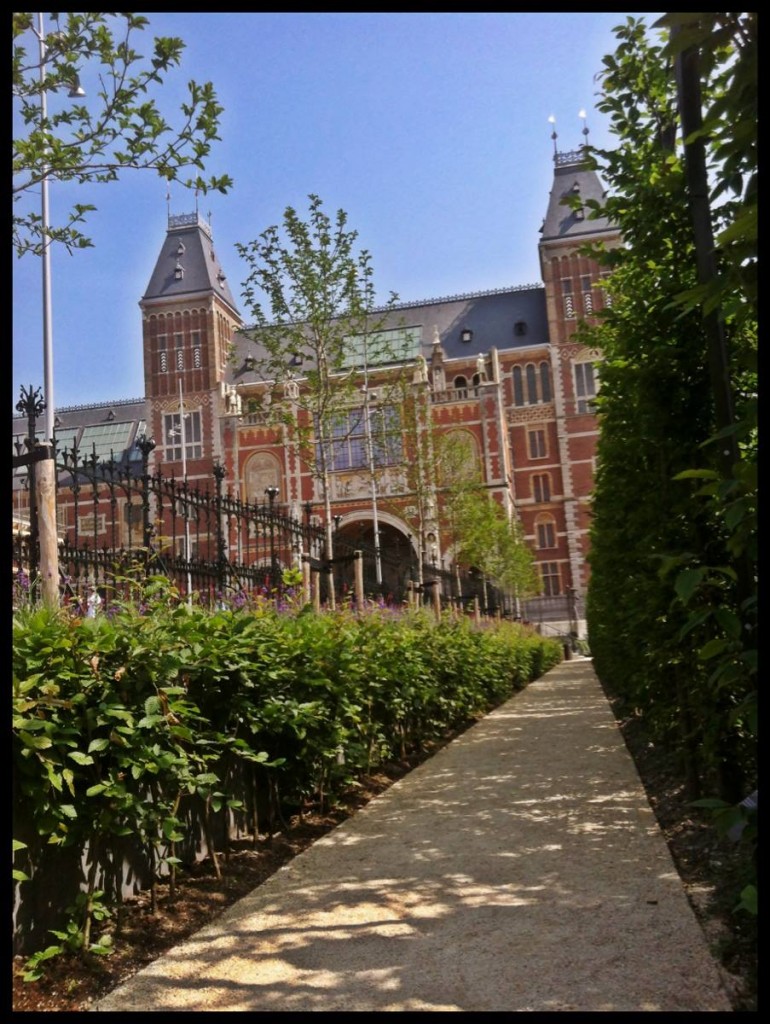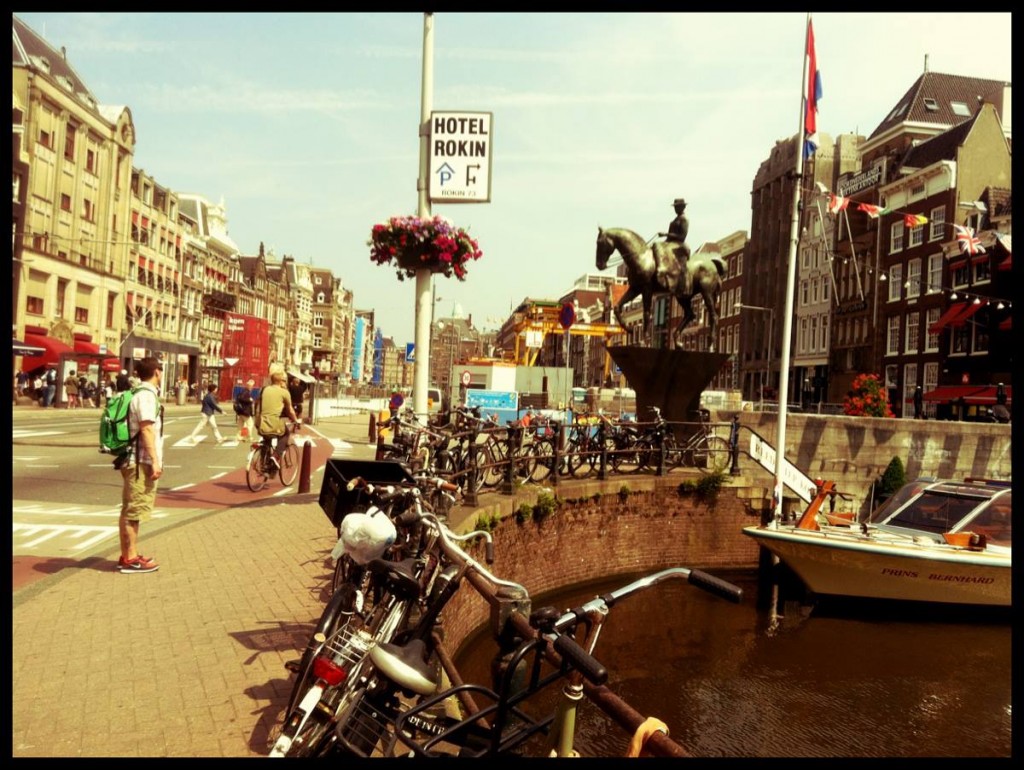The Venice of the North…
 If you read this blog then you know I like to travel and share my experiences. There are some of you that look forward to each post after I’ve taken a trip, or just gotten through another day in Germany. You get super-excited when my journal entry is really long and you absorb every minor detail that I can’t bear to leave unshared. Along with myself, you are the reason I have not yet finished writing all that I wanted to write about Bali; and why the story about Prague was so, darn, long. The rest of you are more like my husband who thought the post about Prague was way too long and wishes he could have finished reading it but he fell asleep. Based on his advice future entries may leave a detail (or two) to be desired and we’ll see how it goes.
If you read this blog then you know I like to travel and share my experiences. There are some of you that look forward to each post after I’ve taken a trip, or just gotten through another day in Germany. You get super-excited when my journal entry is really long and you absorb every minor detail that I can’t bear to leave unshared. Along with myself, you are the reason I have not yet finished writing all that I wanted to write about Bali; and why the story about Prague was so, darn, long. The rest of you are more like my husband who thought the post about Prague was way too long and wishes he could have finished reading it but he fell asleep. Based on his advice future entries may leave a detail (or two) to be desired and we’ll see how it goes.
Today I’m going to write about my recent trip to Amsterdam and I’m going to keep it as short as possible. You will not be receiving a play-by-play; just my top three highlights followed by (maybe) a few anecdotes.
The Rijksmuseum
This may not be a top attraction for someone who is not into art or art history, but I loved it. I studied art in college, so to see my studies in real life is always a thrill. The colors of paints in the works are more brilliant than a text book could ever convey. You get a much better sense of the artist and their intent when you can stand in front of it, see it’s size, and inspect it’s brush strokes. The museum is home to thousands of paintings. You’re smart to get the audio guide and follow it as it highlights the most important works; which are obviously those of the Dutch master painters like Vermeer and Rembrandt. During the 17th Century the Netherlands was at a time of power and prestige. Shipping was booming. It was a Golden Age ruled by the businessmen. Because of this Dutch art is purely aesthetic. Since most of the art was commissioned by common wealthy men it is called meat and potatoes art. I like that. You don’t have to study art to understand this art.The building of the Rijksmuseum is impressive too. Its Great Hall took my breath away. This greeting room is adorned with everything you could ask for; stained glass, mosaic floor tiling, a high coffered ceiling, and murals, from top to bottom, depicting the ideals and traditions of the people of the Netherlands completed in a soft-palette Art Nouveau style. Currently there is a large sculpture exhibit in its surrounding gardens. After our tour of the inside it was nice to get outside, walk around the building, and stop for a cup of coffee in the sun.
The Bazar
Our first meal in Amsterdam was my favorite. We ate at Bazar. It’s a church-turned-restaurant with a golden angel perched on its roof. This makes it easy to find despite it being located in the center of the busiest market in Amsterdam. This market is called the Albert Cuypmarkt. There are many flea markets all over the city, but the Albert Cuypmarkt is the biggest, and maybe the most famous. Lucky for us, this flea market was right across the park from our hotel. After checking-in, and taking a tour of the market, eating at the Bazar is the first thing we did. There neighborhood that our hotel, the flea market, the restaurant, and a slew of other establishments call home is De Pijp. This section of the city is known to be loud, proud, and bohemian. People like Phil and I are drawn to it for its edgy dive bars, eclectic restaurants and cafes, young inhabitants, artistic flairs, and jazzy sounds. The Bazar is exactly like De Pijp. The minute you step through the church doors your eyes jump from the over 30ft high tiled wall, to the central circle bar that appears to be built out of cans, to the enormous stain glass (Moroccan looking) chandeliers, to the half ceiling of christmas lights, to the adorable recycled wood table with mismatch chairs you’ll be dining at. The restaurant serves North African cooking. We ordered the sampler lunch for two. Besides the chicken wings, the traditional bread, and the hummus I couldn’t really tell you what we ate but we liked it.
An Amsterdam Walk
Simply walking through the city itself was a highlight for me. There are more water ways, canals, bridges, rows of bikes, leaning houses, brick houses, doorways, lamp posts, flowers, cafes, painted signs, house boats, sinking boats, stray cats, store fronts, and interesting characters than my senses could handle. The city is an amazing combination of past and present. You see one, and then you see the other. They work together but they don’t blend together. The famous hidden Catholic church is sandwiched between two high-end clothing stores across the street from a McDonalds. The famous Old Church is in the center of the Red Light District…and that’s how it goes.
History has had much influence on the present. It is not a don’t-repeat-the-same-mistakes influence, but more of a this-is-how-we’ve-always-been influence. The people of Amsterdam think, and act, for themselves. They do what makes sense, and is comfortable for their lives, and offer no explanation. As a culture, I find them to be clever, confident, sensible, and compassionate. Maybe two words can describe it all; unpreachy and unpretentious.
Reading before I travel, and studying the country, city, and it’s people, is becoming increasingly important to me. Sightseeing is more impressive and the city itself comes alive once you understand the history of its construction. For instance, the building of the (former) Amsterdam Stock Exchange is a big brick square. You could walk by it multiple times and never care to look at it. There is nothing impressive about it unless you know that it was built with nine million bricks and sits on 5,000 tree trunks. Likewise, Amsterdam is a city built on marshes. Most of its building sit on pilings. A lot of the architecture leans to one side or the other due to settling. If I hadn’t done my research I can’t be certain I would have noticed these details and appreciated (to such an extent) the ground I was walking on.
There are a few things in Amsterdam that are smaller than anything I’ve ever seen…the beers, the hotel rooms, the coffees, most restaurants, and sinks. If you have large hands, are very thirsty, and are traveling to Amsterdam, be prepared to order multiple beers at once and wash your hands one at a time.
That being said there are a few things that are larger…the pancakes, the crowds on the streets and in the cafes (especially at night) and the piles and piles of bikes lining the streets.
A sign of a good trip, in my opinion, is leaving with a few sights and activities undone. If there’s more than one reason why you’d go back; the city has done its job. I’d return to Amsterdam and visit the House of Bols (the cocktail museum) and REM Eiland. REM Eiland is just a restaurant, but it is built on an old oil rig so it sits high up off the ground in the middle of the water amongst shipping docks and other industrialization. I find Dutch design terribly clever. I’d also do more shopping if I went back. And finally, I’m disappointed in myself for not manning-up and eating raw herring. On a return trip this would be a must. I’d saunter up to one of the food trucks positioned on a bridge atop a canal and have myself a raw herring sandwich with a pickle and a mini Heineken. I’ll need the beer to chase the fish.